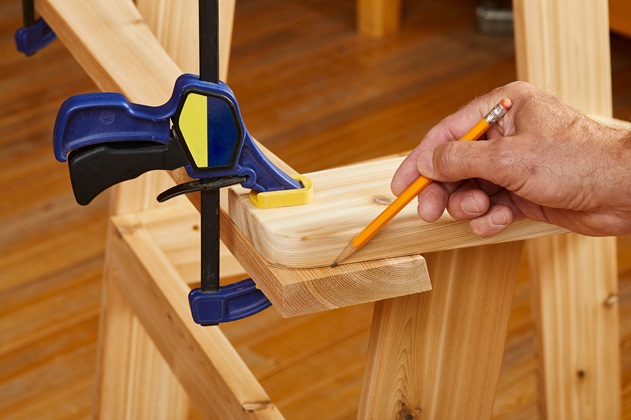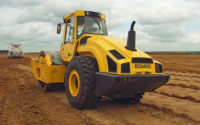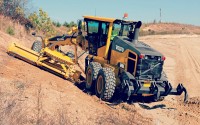The Unsung Heroes of Woodworking: A Comprehensive Guide to Clamps
While chisels, planes, and tenon saws are the tools that chippies, furniture makers, and carpenters are most commonly associated with, clamps are ultimately the implements that no experienced woodworker wants to be caught without. That’s because, even though clamps don’t perform any of the shaping or joining activities that are the cornerstones of woodwork, it would be virtually impossible to perform most woodworking tasks without them.
Regardless of whether you’re building a simple cutting board, a bespoke wooden door and frame, or restoring a decorative antique cabinet, clamps – usually several – provide the essential grip and stability needed to complete the project. There are as many different styles of clamps as there are projects to work on though, which is why if you’re serious about woodworking, you’re going to want to have more than just one type at your disposal.
Wood Clamp Sets Help Keep Your Woodworking Project in Line

Let’s be honest: given all the considerations that can affect the outcome of a woodworking project, alignment is the most crucial. Even the slightest misalignment while sanding, or while a glue-joint is setting can ruin an entire project. High-quality, multi-purpose wood clamp sets are among the most important investments a woodworker can make. From the convenient spring clamps that offer a third hand for oddly shaped forms to the specialty band clamps designed for use on projects with multiple sides and corners, clamps are available for every project size and shape. Depending on the project’s complexity, it’s not uncommon to find multiple types of clamps in use at any given moment.
Five Main Types of Clamps for All Your Clamping Jobs
What’s important to remember about woodworking clamps is that unlike the heavy-duty clamps used on construction sites and with conduit installations, they don’t rely on sheer gripping power to be effective. That’s because the easily damaged, fibrous nature of wood only requires that wood holding clamps be able to apply the amount of pressure necessary to hold a project in place while it’s being worked on, or while an adhesive joint is drying.
In addition to gripping pressure, attributes like jaw size and depth have to be considered when evaluating woodworking clamp styles. A high-quality wood clamp set is expected to be as versatile as it is effective, and there are 5 main clamp styles that every woodworker needs for the bulk of their activities.
- Pipe Clamps. These heavy-duty wood clamps resemble the shoring props found on construction sites, are comprised of a pair of pipe heads on a ½“ or ¾“ round pipe of any length, and are the perfect clamp for the largest and heaviest projects.
- Bar Clamps / F-Clamps. These woodcraft clamps feature two horizontal jaws attached to a flat vertical bar, can form either “F”, “K”, or “U” shaped variations, and can be dependably used to apply equal holding pressure on projects up to 2500mm.
- Base Plate / Bench Clamps. These toggle-type woodworking clamps come in either standard- or recessed-jaw variations, are designed to be attached to a fixed surface like a workbench or floor-mounted tool cabinet, and are ideal for setting up a secure station to support your projects as they’re being worked on.
- One-handed Clamps. These quick-action, vice grip-like carpenter clamps feature either handles or triggers, and are perfect for quickly grasping large or heavy projects, or being able to release them in a single movement.
- Spring Clamps. These plastic carpenter wood clamps resemble one-handed clamps; however, instead of a large locking area, their compact faces allow you to pinch your project, making it possible to work with smaller gripping surfaces, as well as in areas where space may be limited.
The fact is: that when it comes to woodworking, clamping, along with your choice of clamping tools, is just as important as any other jointing, boring, or sanding activity, or instrument that you’ll use. And just as you would when boring or sanding, you also have to be careful of the techniques you use when applying a clamp. Even hardwoods can be damaged if a clamp is employed haphazardly, so regardless of the type of wood clamping you intend to do, there are a few rules that you’ll want to follow.
Tips for Using Your Clamps Wisely

No matter what type of project you’re working on, the point you always want to adhere to when using clamps to hold wood is that the grip of a single clamp should never be so tight that it risks marring the wood’s texture or surface. That’s why experienced woodworkers use higher numbers of moderate-pressure hold-down clamps, than lower numbers of high-pressure clamps.
Together with avoiding overtightening, your best clamping practices will also include:
- Tightening clamps gradually and evenly to avoid distorting the working piece;
- Avoiding attaching clamps to surfaces that aren’t flat or even; and,
- Ensuring that your clamp faces aren’t covered with any glue or other debris.
Ideally, because it’s virtually impossible to use too many clamps whenever you’re working with glue-, or edge joints, always having extra woodworking hold-down clamps on hand is the best way to ensure that you’ll always be able to get a perfect grip on every project.
The Final Word
At the end of the day, there’s no substitute for having top-quality clamps available. And it’s no coincidence that a lot of woodworkers don’t appreciate just how valuable they are until they realise just how many different types there are.
High-quality, multi-purpose wood clamp sets give you the versatile gripping pressure you need to take on any project. They’re the ideal investment for all your woodworking activities.



